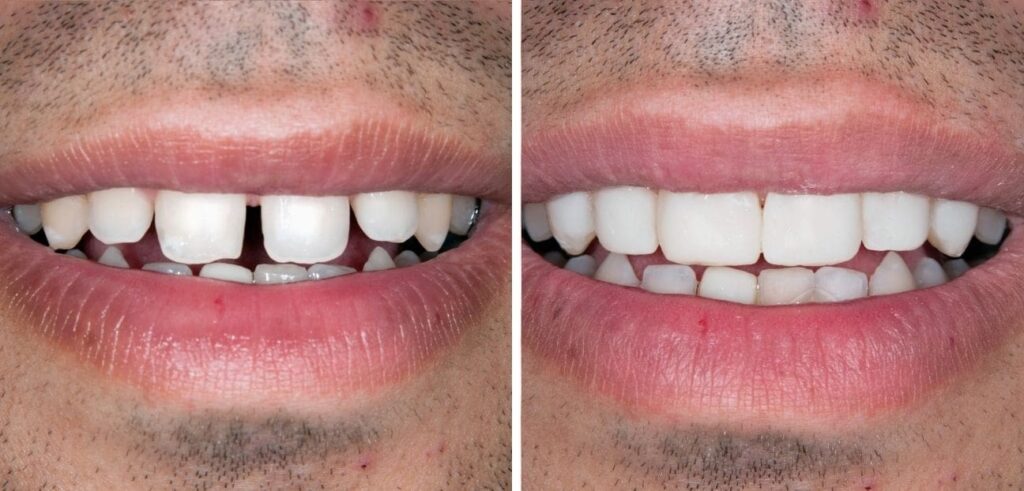Dental Diastema Treatment with Composite Restoration
Dental diastema refers to the space or gap between two teeth, often most noticeable between the upper front teeth. While diastemas can occur anywhere in the mouth, the gap between the front teeth is the most common. Various factors contribute to this condition, including genetics, abnormal dental development, habits such as thumb-sucking, or even gum disease.

Available Treatments for Dental Diastema
Several methods can be used to close a dental gap. These include:
- Orthodontic Treatment: Braces or clear aligners can gradually shift the teeth to close the gap. This method is effective but can be time-consuming.
- Dental Veneers: Thin shells of porcelain or composite resin are bonded to the front surface of the teeth to close the gap. This is a more permanent and aesthetically pleasing option.
- Composite Restoration: A less invasive and cost-effective method where composite resin is applied to the teeth to fill the gap.
What is Composite Restoration?
Composite restoration involves using a tooth-colored resin material to repair or enhance the appearance of teeth. In the case of diastema closure, the resin is applied to the teeth on either side of the gap to close it seamlessly.

Advantages of Composite Restoration: Composite restoration offers several benefits for closing dental gaps:
- Non-Invasive: Unlike veneers, composite restoration doesn’t require significant alteration of the tooth structure.
- Cost-Effective: It is generally less expensive than other cosmetic procedures like veneers or orthodontic treatments.
- Quick Procedure: The entire process can often be completed in a single visit to the dentist.
- Aesthetic Appeal: Composite resin can be matched to the natural color of the teeth, providing a seamless and natural-looking result.
Process of Composite Restoration. The composite restoration procedure for diastema closure involves the following steps:
- Consultation and Planning: The dentist evaluates the gap and discusses the desired outcome with the patient.
- Preparation: The teeth are cleaned, and the surface is prepared for the bonding process.
- Application: The dentist applies the composite resin in layers, carefully shaping and contouring it to close the gap.
- Curing: Each layer of resin is hardened using a special light.
- Polishing: The final step involves polishing the composite to match the texture and shine of the natural teeth.
Is Composite Restoration Painful?
Composite restoration is typically not painful. The procedure is minimally invasive, and local anesthesia is usually sufficient to ensure comfort. Patients may experience slight sensitivity following the procedure, but this usually subsides quickly. Moreover, as the best dentist in dhaka we always ensure a painless process in all types of dental treatment.

Treatment Time and Longevity
The composite restoration procedure for diastema closure can often be completed in one appointment, making it a convenient option for patients. The longevity of composite restorations depends on factors such as oral hygiene, dietary habits, and the patient’s overall dental health. With proper care, composite restorations can last for many years.
Cost for Composite Restoration
Dental diastema, or tooth gap, can be effectively treated using various methods, with composite restoration being a popular and cost-effective choice. This minimally invasive procedure offers quick results and a natural appearance, making it an excellent option for those seeking teeth gap correction. Treatment cost vary based on the gap condition & position. For a quality Composite Restoration treatment cost may start from 8000 BDT for a gap correction.
For an Appointment of Root Canal Treatment, Feel Free to Call Us:
Sporsho Dental Care
Ramzannesa Super Market (1st Floor)
Metro Rail Pillar No 165
Mirpur 12 Dhaka
Call: +88 01676347526
